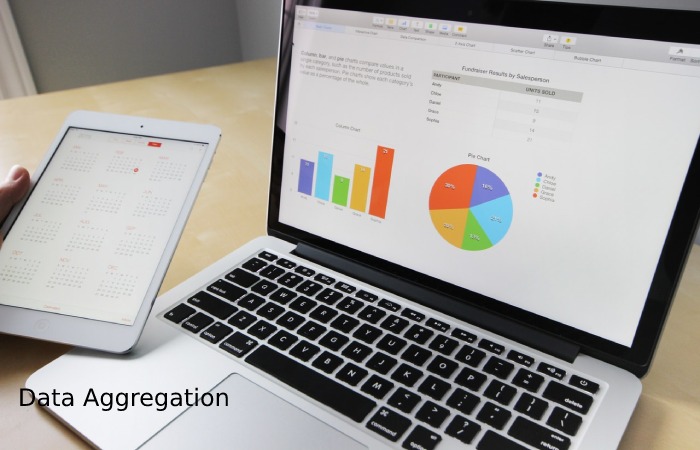Data aggregation is a kind of data and information removal process. Data is searched, collected, and presented in a summary report-based format to achieve specific business goals or strategies and perform human analysis.
It is a component of Business Intelligence (BI) solutions. Data aggregation staff or search databases find relevant search query data and present the results in a summarized format that is meaningful and useful to the end-user or application.
Data aggregation is complete manually or through specialized software.
Table of Contents
Benefits of Data Aggregation in Metric-Based Reports
Quick access to data is energetic to make the right choices at the right time, especially at a time like the present, where every action has its origin in large amounts of data.
However, collecting, processing and analyzing large amounts of data can be complicated if you want to shorten the response time as much as possible. Where the importance of Data Aggregation becomes clear. An example is working with metrics from key performance indicators (KPIs).
To recreate a real scenario, we could talk about a telecommunications company, specifically its finance area. In this case, the proposed objective would be to maintain a set of desktops presenting a group of previously defined KPIs.
The data source that feeds these dashboards is the financial module of the corporate ERP, which provides information about:
Sales revenue: includes the metrics recorded from incoming revenue transactions derived from the services and products contracted by customers.
Other income contains the incoming income transactions derived from other concepts.
Personnel expenses: includes individual expense transactions for each employee, from salaries to bonuses, compensation or extraordinary expenses, such as those related to severance pay.
Supply expenses: contains the payment transactions to suppliers.
Importance of Data Aggregation in E-commerce

Increasing access to third-party data is changing the way retailers do business. Marketers’ access to Data Aggregation services is often through an API, a decision that significantly impacts the future of e-commerce.
Opting for a data aggregation API means enabling access to data that would otherwise be out of the reach of the business. The best thing is its scalability. In addition, this is a modular approach, allowing this feature to combine with existing systems.
It is enough to imagine the advantages of accessing independent reviews on product pages without the need to collect and organize the data. In addition, knowing the comments of consumers and experts about the brand allows making more accurate and timely decisions, which have an impact on:
- Higher conversion rate.
- More traffic to the business website.
- Greater consumer confidence.
How do Data Aggregators Work?
Data aggregators combine atomic data from multiple sources, process the data to gain new insights, and present the aggregated data in a summary view. Additionally, data aggregators typically can trace the lineage of data and trace it back to the underlying atomic data collected.
Data Aggregation: your Next Step
Data aggregation is the first step to becoming a digital enterprise, and it is so, not because you can’t do other things first, but because you can’t wait: every second that passes, you’re losing data that you can never get back.
So, Going Down to Practical Terms;
- Internal Data Collection
- Aggregation of data from external sources
- Creation of a corporate data lake
- Transformation of the data obtained into helpful information for your company
Types of Data Aggregation
Internal Data:
To collect internal data, you need to identify where employees interact, where value is the procedure in your digital value chain. Where customers interact with company systems.
External Data Aggregation:
Aggregating external data can be trickier, especially when you want to collect competitor data, as it may not be easy to access. However, the benefit will outweigh the many complications that may arise. You will be able to get to know your clients, competitors, potential clients better, and the organization itself and obtain the opinions of the market about the organization.
Corporate Data Lake:
Building a Data Lake is also crucial, as it will be the super brain that will finally guide the company and allow it to be a trustworthy digital company. Moreover, the generation of a Data Lake is essential because it can change the company’s course. Therefore, it is worth investing the time it requires.
Data-Driven Culture:
Finally, it will also be necessary to change its culture towards a data-driven company. It is a necessity, and all departments will eventually be able to benefit from better decision making thanks to data. But, when you have the data, you need to understand how to use it.
Conclusion
Data aggregation consolidates vast amounts of detailed data into higher levels of dimension hierarchies. For instance, storing each transaction is no longer required. Instead, you can group large sets of transaction into just a few rows based on transaction type. The month they occurred. As a result, it makes it easier to manage data.
